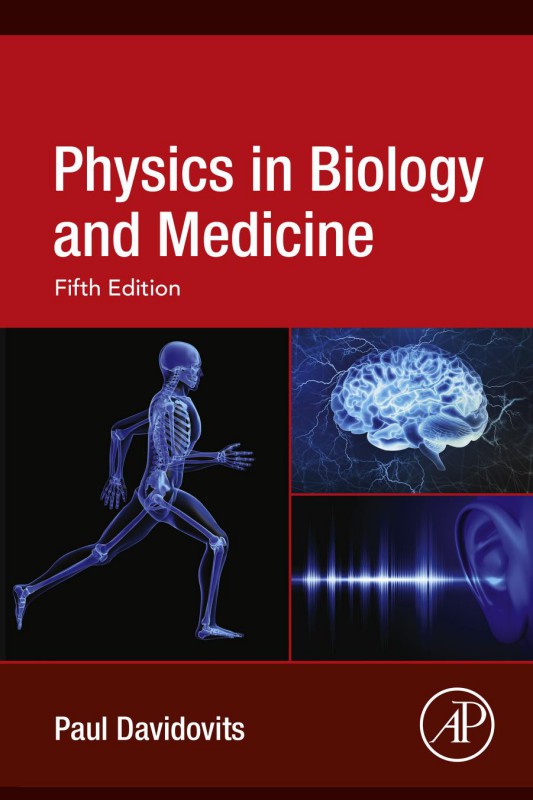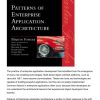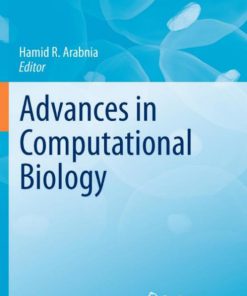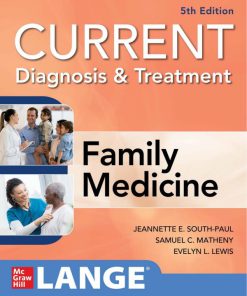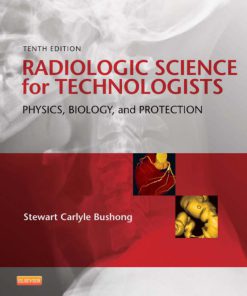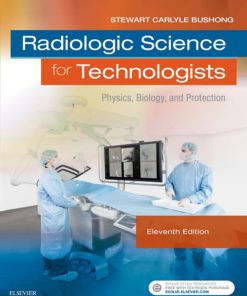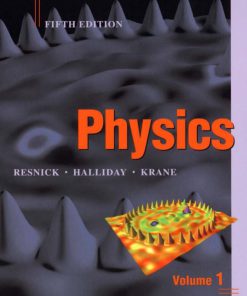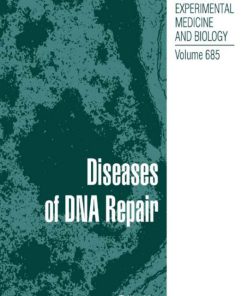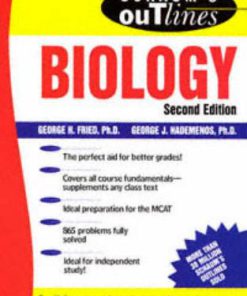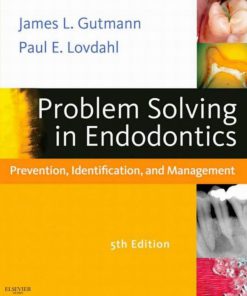Physics in Biology and Medicine 5th Edition by Paul Davidovits 9780128137178 0128137177
$50.00 Original price was: $50.00.$25.00Current price is: $25.00.
Authors:Paul Davidovits , Series:Medicine [94] , Tags:Physics in Biology and Medicine; Fifth Edition (2020) 378pp. 978-0-12-813716-1 , Author sort:Davidovits, Paul , Ids:9780128137161 , Languages:Languages:eng , Published:Published:Apr 2011 , Publisher:Academic Press , Comments:Comments:Physics in Biology and Medicine, Fifth Edition (2020) 378pp. 978-0-12-813716-1
Physics in Biology and Medicine 5th Edition by Paul Davidovits – Ebook PDF Instant Download/Delivery.9780128137178,0128137177
Full download Physics in Biology and Medicine 5th Edition after payment
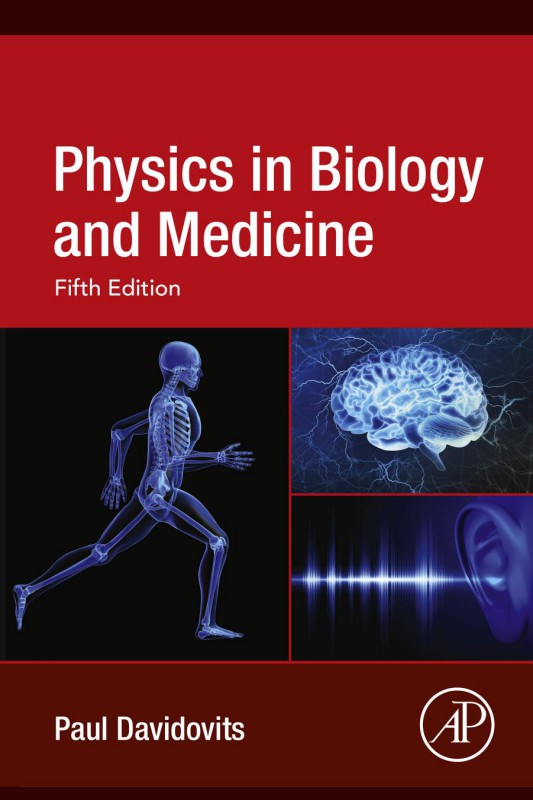
Product details:
ISBN 10:0128137177
ISBN 13:9780128137178
Author:Paul Davidovits
A best-selling resource now in its fifth edition, Paul Davidovits’ Physics in Biology and Medicine provides a high-quality and highly relevant physics grounding for students working toward careers in the medical and related professions. The text does not assume a prior background in physics, but provides it as required. It discusses biological systems that can be analyzed quantitatively and demonstrates how advances in the life sciences have been aided by the knowledge of physical or engineering analysis techniques, with applications, practice, and illustrations throughout.
Physics in Biology and Medicine, Fifth Edition, includes new material and corresponding exercises on many exciting developments in the field since the prior edition, including biomechanics of joint replacement; biotribology and frictional properties of biological materials such as saliva, hair, and skin; 3-D printing and its use in medicine; new materials in dentistry; microfluidics and its applications to medicine; health, fractals, and the second law of thermodynamics; bioelectronic medicine; microsensors in medicine; role of myelin in learning, cryoelectron microscopy; clinical uses of sound; health impact of nanoparticle in polluted air.
This revised edition delivers a concise and engaging introduction to the role and importance of physics in biology and medicine. It is ideal for courses in biophysics, medical physics, and related subjects.
- Provides practical information and techniques for applying knowledge of physics to the study of living systems.
- Presents material in a straightforward manner requiring very little prior knowledge of physics or biology.
- Includes many figures, examples, illustrative problems and appendices, which provide convenient access to the important concepts of mechanics, electricity, and optics used in the text.
- Features an Instructor Solutions Manual and Powerpoints. Qualified professors can register to request access here: https://educate.elsevier.com/book/details/9780128137161
- Powerpoints are also available for student study: https://www.elsevier.com/books-and-journals/book-companion/9780128137161
Physics in Biology and Medicine 5th Table of contents:
Chapter 1: Static Forces1.1. Equilibrium and Stability
1.2. Equilibrium Considerations for the Human Body
1.3. Stability of the Human Body under the Action of an External Force
1.4. Skeletal Muscles
1.5. Levers
1.6. The Elbow
1.7. The Hip
1.7.1. Limping
1.8. The Back
1.9. Standing Tip-Toe on One Foot
1.10. Dynamic Aspects of Posture
Exercises
Chapter 2: Friction
2.1. Standing at an Incline
2.2. Friction at the Hip Joint
2.3. Spine Fin of a Catfish
2.4. Biotribology
2.4.1. Oral Biotribology
2.4.2. Hair Biotribology
2.4.3. Biotribology of Textiles
Exercises
Chapter 3: Translational Motion
3.1. Vertical Jump
3.2. Effect of Gravity on the Vertical Jump
3.3. Running High Jump
3.4. Range of a Projectile
3.5. Standing Broad Jump
3.6. Running Broad Jump (Long Jump)
3.7. Motion through Air
3.8. Energy Consumed in Physical Activity
Exercises
Chapter 4: Angular Motion
4.1. Forces on a Curved Path
4.2. A Runner on a Curved Track
4.3. Pendulum
4.4. Walking
4.5. Physical Pendulum
4.6. Speed of Walking and Running
4.7. Energy Expended in Running
4.8. Alternate Perspectives on Walking and Running
4.9. Carrying Loads
Exercises
Chapter 5: Elasticity and Strength ofMaterials
5.1. Longitudinal Stretch and Compression
5.2. A Spring
5.3. Bone Fracture: Energy Considerations
5.4. Impulsive Forces
5.5. Fracture Due to a Fall: Impulsive Force Considerations
5.6. Airbags: Inflating Collision Protection Devices
5.7. Whiplash Injury
5.8. Falling from Great Height
5.9. Osteoarthritis and Exercise
5.10. Three-Dimensional (3-D) Printing a New Technique for Shaping Materials
5.11. Joint Replacement
5.11.1. Hip Replacement
5.11.2. Knee Replacement
5.11.3. Osseointegration
5.11.4. Attachment of Artificial Limbs
5.11.5. Osseointegration in Joint Replacement
Exercises
Chapter 6: Insect Flight
6.1. Hovering Flight
6.2. Insect Wing Muscles
6.3. Power Required for Hovering
6.4. Kinetic Energy of Wings in Flight
6.5. Elasticity of Wings
Exercises
Chapter 7: Fluids
7.1. Force and Pressure in a Fluid
7.2. Pascal’s Principle
7.3. Hydrostatic Skeleton
7.4. Archimedes Principle
7.5. Power Required to Remain Afloat
7.6. Buoyancy of Aquatic Animals
7.7. Surface Tension
7.8. Soil Water
7.9. Insect Locomotion on Water
7.10. Contraction of Muscles
7.11. Surfactants
Exercises
Chapter 8: The Motion of Fluids
8.1. Bernoulli’s Equation
8.2. Viscosity and Poiseuille’s Law
8.3. Turbulent Flow
8.4. Circulation of the Blood
8.5. Blood Pressure
8.6. Control of Blood Flow
8.7. Energetics of Blood Flow
8.8. Turbulence in the Blood
8.9. Arteriosclerosis and Blood Flow
8.10. Power Produced by the Heart
8.11. Measurement of Blood Pressure
8.12. Microfluidics
Exercises
Chapter 9: Heat and Kinetic Theory
9.1. Heat and Hotness
9.2. Kinetic Theory of Matter
9.3. Definitions
9.3.1. Unit of Heat
9.3.2. Specific Heat
9.3.3. Latent Heats
9.4. Transfer of Heat
9.4.1. Conduction
9.4.2. Convection
9.4.3. Radiation
9.4.4. Diffusion
9.5. Transport of Molecules by Diffusion
9.6. Diffusion through Membranes
9.7. The Respiratory System
9.8. Surfactants and Breathing
9.9. Diffusion and Contact Lenses
Exercises
Chapter 10: Thermodynamics
10.1. First Law of Thermodynamics
10.2. Second Law of Thermodynamics
10.3. Difference between Heat and Other Forms ofEnergy
10.4. Thermodynamics of Living Systems
10.5. Information and the Second Law
10.6. Fractals, Chaos, and the Second Law of Thermodynamics
10.6.1. Fractals
10.6.2. Chaos
10.6.3. Entropy and Chaos
10.6.4. Chaos and Medicine
Exercises
Chapter 11: Heat and Life
11.1. Energy Requirements of People
11.1.1. Basal Metabolic Rate and Body Size
11.2. Energy from Food
11.3. Regulation of Body Temperature
11.4. Control of Skin Temperature
11.5. Convection
11.6. Radiation
11.7. Radiative Heating by the Sun
11.8. Evaporation
11.9. Resistance to Cold
11.10. Heat and Soil
11.11. Energy Requirements of Large Carnivores
Exercises
Chapter 12: Waves and Sound
12.1. Properties of Sound
12.2. Some Properties of Waves
12.2.1. Reflection and Refraction
12.2.2. Interference
12.2.3. Diffraction
12.3. Hearing and the Ear
12.3.1. Performance of the Ear
12.3.2. Frequency and Pitch
12.3.3. Intensity and Loudness
12.4. Bats and Echoes
12.5. Sounds Produced by Animals
12.6. Acoustic Traps
12.7. Clinical Uses of Sound
12.7.1. The Stethoscope
12.7.2. Ultrasonic Waves
12.7.3. Ultrasonic Imaging
12.7.4. Ultrasonic Flow Meter
12.7.5. Echocardiography
12.7.6. Therapeutic Use of Ultrasound
12.7.7. Focused Ultrasound Surgery (FUS)
12.7.8. Elastography
Exercises
Chapter 13: Electricity
13.1. The Nervous System
13.1.1. The Neuron
13.1.2. Electrical Potentials in the Axon
13.1.3. Action Potential
13.1.4. Axon as an Electric Cable
13.1.5. Propagation of the Action Potential
13.1.6. An Analysis of the Axon Circuit
13.1.7. Synaptic Transmission
13.1.8. Action Potentials in Muscles
13.1.9. Surface Potentials
13.1.10. Role of Myelin in Learning
13.2. Electricity in Plants
13.3. Electricity in the Bone
13.4. Electric Fish
Exercises
Chapter 14: Electrical Technology
14.1. Electrical Technology in Biological Research
14.2. Diagnostic Equipment
14.2.1. The Electrocardiograph
14.2.2. The Electroencephalograph
14.3. Physiological Effects of Electricity
14.4. Bioelectronic Medicine
14.4.1. Defibrillators
14.4.2. Heart Pacemakers and Implantable Cardioverter-Defibrillators (ICD)
14.4.3. Electrical Muscle Stimulation
14.4.4. Electroconvulsive Therapy
14.4.5. Vagus Nerve Stimulation
14.4.6. Vagus Nerve and the Immune System
14.4.7. Nanomedicine
14.4.8. Concerns
14.5. Control Systems
14.6. Feedback
14.7. Sensory Aids
14.7.1. Hearing Aids
14.7.2. Cochlear Implant
Exercises
Chapter 15: Optics
15.1. Vision
15.2. Nature of Light
15.3. Structure of the Eye
15.4. Accommodation
15.5. Eye and the Camera
15.5.1. Aperture and Depth of Field
15.6. Lens System of the Eye
15.7. Reduced Eye
15.8. Retina
15.9. Resolving Power of the Eye
15.10. Threshold of Vision
15.11. Vision and the Nervous System
15.12. Defects in Vision
15.13. Lens for Myopia
15.14. Lens for Presbyopia and Hyperopia
15.15. Extension of Vision
15.15.1. Telescope
15.15.2. Microscope
15.15.3. Confocal Microscopy
15.15.4. Fiber Optics
15.16. Physiological and Psychological Effects of Light on People
Exercises
Chapter 16: Atomic Physics
16.1. The Atom
16.2. Spectroscopy
16.3. Quantum Mechanics
16.4. Electron Microscope
16.5. X-rays
16.6. X-ray Computerized Tomography
16.7. Lasers
16.7.1. Lasers Surgery
16.7.2. Lasers in Medical Imaging
16.7.3. Lasers in Medical Diagnostics
16.8. Atomic Force Microscopy
16.9. Cryoelectron Microscopy (Cryo-EM)
16.10. Laws of Physics and Life
Exercises
Chapter 17: Nuclear Physics
17.1. The Nucleus
17.2. Magnetic Resonance Imaging
17.2.1. Nuclear Magnetic Resonance
17.2.2. Imaging with NMR
17.2.3. Functional Magnetic Resonance Imaging (fMRI)
17.3. Radiation Therapy
17.4. Food Preservation by Radiation
17.5. Isotopic Tracers
Exercises
Chapter 18: Nanotechnology in Biology and Medicine
18.1. Nanostructures
18.2. Nanotechnology
18.3. Some Properties of Nanostructures
18.3.1. Optical Properties of Metal Nanoparticles
18.3.2. Surface Properties of Metal Nanoparticles
18.3.3. Superhydrophilicity of Nano-Structured Surfaces
18.4. Medical Applications of Nanotechnology
18.4.1. Nanoparticles as Biosensors
18.4.2. Nanotechnology in Cancer Therapy
18.4.3. Passive Targeted Heating of Tumors
18.4.4. Targeted Drug Delivery
18.4.5. Silver Nanoparticles in Medicine
18.5. Concerns Over Use of Nanoparticles in Consumer Products
18.6. Health Impact of Nanoparticles in Polluted Air
People also search for Physics in Biology and Medicine 5th:
physics in biology and medicine solutions manual pdf
paul davidovits physics in biology and medicine
physics in biology and medicine journal
physics in biology and medicine paul davidovits pdf
physics in biology and medicine 5th edition pdf free download
You may also like…
eBook PDF
Physics Volume 1 5th Edition by Robert Resnick,David Halliday,Kenneth Krane 9781119076971 1119076978
eBook PDF
Problem Solving in Endodontics 5th edition by James Gutmann,Paul Lovdahl 9780323078016 032307801X

